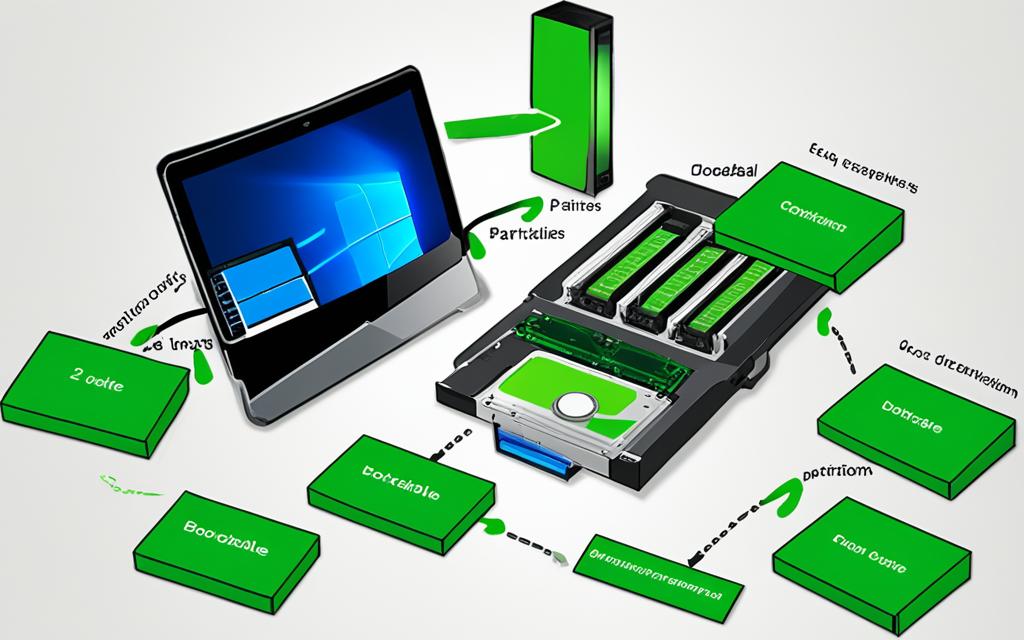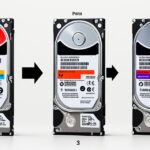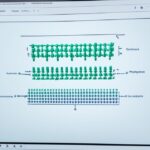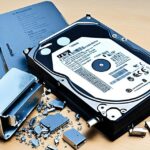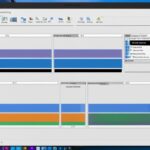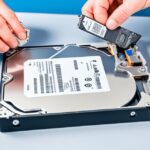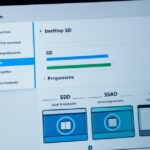Table of Contents
Creating a bootable partition is a must for those who want to use several operating systems on one computer. This method lets you store the needed files in a specific area. This area helps your computer start up from that particular spot. By setting up partitions well, you can keep your hard drive tidy. This makes sure each system works right, without messing with the others. While new technology has made making separate boot partitions less vital, knowing how to manage these spaces is key for tech fans. For more information, check out these great tips here. Remember, splitting your hard disk into different sections for partitioning is common in the tech world1.
Now, let’s get into the details of bootable and system partitions. We’ll cover how to create these partitions for different Windows versions. Knowing this will help you get better at managing your hard drive. This means you can set up and configure everything smoothly. Get ready to boost your tech skills!
Key Takeaways
- A bootable partition allows users to install multiple operating systems without affecting each other’s functionality.
- Data loss can occur if mistakes are made during partition setup, emphasizing the need for careful management.
- Windows users need to follow specific steps for each version to successfully create a boot partition.
- Advanced encryption technologies and RAID software have influenced the necessity of separate boot partitions over time.
- Using tools like AOMEI Partition Assistant Professional can simplify the process of making a partition bootable safely and efficiently.
What is a Bootable Partition?
A bootable partition is a crucial part of your hard drive, needed to start the operating system. Knowing about boot partition definition helps improve your PC’s speed. This part of your drive helps the system find key files when starting up, making it quick to switch from off to on. The role of boot partitions goes further by allowing you to use more than one operating system. This flexibility meets the needs of various users.
Definition and Purpose
The bootable partition is the place where your computer’s essential files live. These are needed to start up. When you use multi-OS configurations, such partitions are a must. Each operating system must have its own boot partition to stop any mix-ups and keep the start-up smooth. Using tools like EaseUS Partition Master helps in handling these partitions. It keeps things running well.
Importance of Boot Partitions in Multi-OS Configurations
In systems with multi-OS configurations, boot partitions are very important. They let different operating systems exist on one computer. Having separate boot partitions for each lets you switch between them easily. Suggestions include using primary and extended partitions for tidy files and better performance2. With proper management tools, you can change systems smoothly, boosting productivity and offering practical benefits.
Many choose to use a bootable USB partition manager to resize partitions, making things much easier3. Managing partition sizes and types helps navigate the complex world of multi-OS configurations. Users tend to select managers that are easy to use. They’re great for formatting partitions to FAT32 or NTFS easily for booting. So, getting to grips with the purpose of boot partitions is key in today’s tech world.
| Partition Type | Description | Usage Example |
|---|---|---|
| Primary Partition | Active partitions for an operating system installation | Windows 10 installation |
| Extended Partition | Allows creation of multiple logical drives beyond primary limits | Creating additional drives for storage |
| Logical Partition | Divisions created within an extended partition | Data organisation for specific applications |
Understanding boot partitions fully means you can better handle your computer. It makes dealing with today’s tech simpler.
In sum, boot partitions are key for managing multiple operating systems. They let users tailor their tech experience more personally32.
Understanding Boot Partitions and System Partitions
To effectively manage partitions, knowing the difference between boot and system partitions is key. This knowledge helps understand how operating systems start and work with your computer’s hardware and software. It’s crucial for the smooth operation of your computer.
Distinction Between Boot and System Partitions
System partitions hold the files needed to start your operating system. The boot partition, on the other hand, contains the operating system’s installation files. Recognising the difference between these is vital for your system’s best performance. When Microsoft released Windows NT 3.1, it clarified the roles of system and boot partitions for the first time. Before Windows 7, both partitions were often the same and given the “C:” drive letter. But with Windows 7, a separate hidden system partition is now created automatically4.
Boot partitions, or boot volumes, sit on the hard disk and usually take up just a few megabytes5. This setup lets you install several versions of the same operating system, like Windows 7, 8, and 10, on different boot partitions.
The Role of the Bootloader
The bootloader plays a crucial role in starting a computer. It decides which files the operating system needs to load when starting up. This is very important for those who use more than one operating system. The way you manage partitions can strongly affect how your system runs and its ability to recover from problems. If the boot partition is lost, it can cause big issues like making the computer unable to start. In such cases, tools like EaseUS Partition Master can help recover a lost boot partition. Meanwhile, EaseUS Todo Backup can clone and migrate the operating system, keeping your important files accessible5.
How to Create a Bootable Partition on Hard Drive
Creating a bootable partition is key for users who want to set up new operating systems or use specialty apps. Before getting into the details, it’s crucial to know what you need for successful partitioning.
Prerequisites for Partition Creation
To make a bootable partition, you must have enough free space on your hard drive. You might save half of a 1 TB drive for storage or create a 20 GB NTFS partition for showing how it’s done. If other partitions take up space, you may have to shrink or remove them. This is often done with partition tools. Knowing why partitioning matters helps with easier setups and changes.
Common Tools and Utilities for Partitioning
Many tools are there to help create a bootable partition easily. Among them, EaseUS Partition Master stands out. It’s easy for starters, with a simple interface. It lets you activate a partition without typing commands. The tool supports Windows versions like XP, Vista, 7, 8, 10, and 11. This makes it a go-to choice for lots of users6.
It also does more, like resize, format, and defrag hard drive partitions. Users can also change the file system type and set cluster sizes. With such tools, managing disk space is easy. This makes making a bootable partition a straightforward task7
Creating Bootable Partitions in Different Windows Versions
Creating bootable partitions changes with different Windows versions. It’s crucial to know these steps for managing your system well. Windows XP has unique steps compared to Windows Vista, 7, 8, and 10. Knowing how to do this helps you run multiple operating systems smoothly and avoid problems.
Steps for Windows XP
For Windows XP, start by going to the Computer Management tool. Then, use Disk Management to make a new partition. Remember, if you’re setting up a dual-boot system, install older Windows versions before XP. This helps prevent issues.
Steps for Windows Vista and 7
Windows Vista and 7 have a similar process, but accessing it is slightly different. Go to Disk Management to create your partition. It’s important to install XP before Vista or 7 for an error-free dual-boot setup.
Steps for Windows 8 and 10
Windows 8 and 10 make creating a bootable partition easier with their Disk Management tools. You can easily create a simple volume for booting. Make sure to allocate at least 20 GB for 64-bit versions. Following these guidelines ensures you can create boot partitions effectively across all Windows versions, improving your system’s functionality8910.
FAQ
What is a bootable partition?
A bootable partition is a specific area on a hard drive. It holds the necessary files for an operating system (OS) to run. This makes it possible for users to start their computer from that partition.
Why is a bootable partition important for multi-operating system setups?
When using several operating systems on one computer, like Windows Vista and Windows 7, a bootable partition is key. It lets each OS have its own section for starting up. This setup enhances the boot process and helps keep things organised.
What is the difference between a boot partition and a system partition?
The system partition has files needed to start the OS. In contrast, the boot partition stores the OS installation files. Knowing the difference helps in managing your computer better.
What role does the bootloader play in bootable partitions?
The bootloader is crucial software. It starts up the operating system by telling it which files to load. Without it, switching between different OSes would be difficult.
What prerequisites should I consider before creating a bootable partition?
Check for enough unused space on your hard drive before making a bootable partition. If you’re short on space, consider shrinking or deleting other partitions. This will make room for your new bootable partition.
Which tools can I use to create a bootable partition?
For creating bootable partitions, you can use Disk Management or the diskpart command. These tools are built into your computer and help in organising your disk properly.
What are the steps for creating a bootable partition on Windows XP?
On Windows XP, open the Computer Management tool and navigate to Disk Management. Follow the guidelines there to set up a new partition. Make sure you allocate enough space and choose the right settings.
How do I create bootable partitions in Windows Vista and 7?
The process for Vista and 7 is similar to XP but with some minor changes. Always follow the directions specific to each OS to avoid issues.
What are the specific steps for creating bootable partitions in Windows 8 and 10?
Windows 8 and 10 make partitioning simpler with updated Disk Management tools. Just follow the setup guide. And remember, install older Windows versions before newer ones for a smooth dual-boot setup.
Source Links
- https://recoverit.wondershare.com/boot-partition.html – What Is Boot Partition and How to Create a Boot Partition for Your PC
- https://www.lenovo.com/us/en/glossary/computer-partition/ – Partition: How do you create partitions in Windows 10
- https://www.easeus.com/partition-master/usb-partition-manager.html – How-to: Create USB Bootable Partition Manager to Manage Partitions Safely
- https://en.wikipedia.org/wiki/System_partition_and_boot_partition – System partition and boot partition
- https://www.easeus.com/knowledge-center/boot-partition.html – What Is Boot Partition? [Specifically Explained]
- https://www.easeus.com/computer-instruction/diskpart-set-boot-partition-windows-10.html – How to Use Diskpart to Set Boot Partition in Windows 10 New Guide]
- https://forum.openmandriva.org/t/how-to-create-or-have-mounted-at-boot-a-data-partition-with-kde-partition-manager/1841 – How to create or have mounted at boot a data partition with KDE Partition Manager
- https://www.soundonsound.com/techniques/partitioning-pc-hard-drives-multi-boot-systems – Partitioning PC Hard Drives For Multi-boot Systems
- https://learn.microsoft.com/en-us/windows-hardware/manufacture/desktop/configure-uefigpt-based-hard-drive-partitions?view=windows-11 – UEFI/GPT-based hard drive partitions
- https://www.partitionwizard.com/clone-disk/system-and-boot-partition-on-different-drives.html – Fix “System Partition and Boot Partition on Different Drives” – MiniTool Partition Wizard

